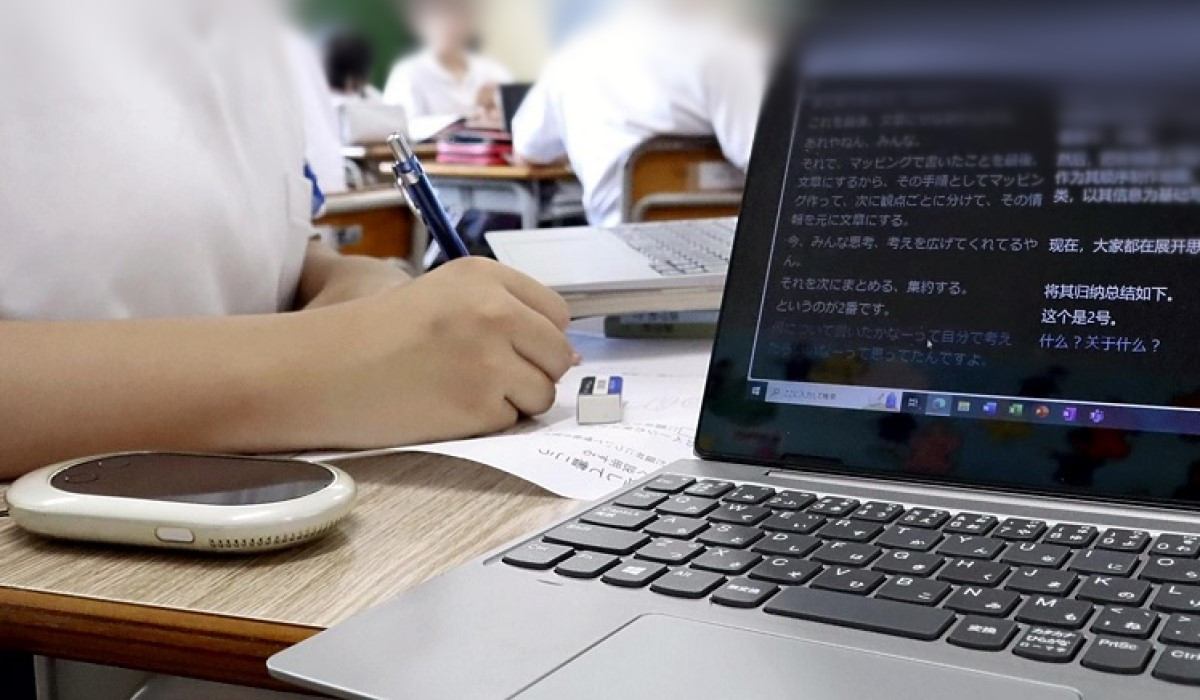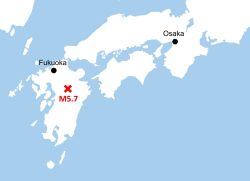Kobe City Uses Simultaneous Translation System for Foreign Schoolchildren; Terminals are Expected to be Important Tool for Helping Growing Number of Immigrants

6:00 JST, September 17, 2024
KOBE — The Kobe City Board of Education has begun using “Pocketalk for School,” a multilingual classroom translation system, to help local foreign schoolchildren who are not used to classes taught in Japanese. The city says its adoption of Pocketalk this school year makes it the first government in Japan to use such a system.
The system instantly translates Japanese spoken by teachers into a schoolchild’s native language and displays it on a learning terminal at their desk.
In what the city said is the first such attempt by a municipality, the city hopes the system will help immigrant students adjust to Japanese school life, even a little faster.
“Kyotsu ten o bunrui shite.” Sort these things into groups.
“Joho o seiri shite.” Put this information in order.
Yumi Muronosono, 48, a teacher at the municipal Minatojima Gakuen Compulsory Education School in Chuo Ward, Kobe, gave these instructions during a Japanese language class for seventh graders (equivalent to first-year junior high school students).
What the teacher said in Japanese was simultaneously translated into Chinese and displayed on a learning terminal placed in front of a Chinese student, 13.
The student seemed to understand what the teacher said and started to fill out the worksheet, with some help from classmates.
The student was pleased with the convenience of the system, while the teacher emphasized the effect of the system, saying, “The system helps [foreign students] become part of the class by letting them take in the lesson just like everyone else.”
The system was developed for educational institutions by Pocketalk Corp., a Tokyo-based manufacturer and distributor of automatic translation devices. It picks up a teacher’s speech with a small microphone and translates it as they speak. It covers 74 languages.
The system was used on a trial basis at four schools in March, then started to be used on a regular basis at 19 elementary, junior high and compulsory education schools in May.
As its users need to be able to read text in their native language, the system is intended, in principle, to be used by students in fourth grade and above during their first school term after arriving in Japan.
According to the city, there were about 56,300 foreign residents in the city as of April, an increase of about 30% from 2015. There were about 1,700 foreign schoolchildren from 62 countries. Among them, 657 had difficulty studying in Japanese, an increase of about 70% from 2015.
According to the board of education, the daily school lives of foreign schoolchildren are mainly supported by “language support staff” employed by the city.
However, the number of schoolchildren who need Japanese language support has been increasing in recent years, causing a shortage of language support staff. The schools have so far been using small automatic translators, but these do not have a simultaneous interpretation function, so the students receive little learning support when language support staff are not available.
The education board is considering using the system in more schools, depending on how it is effective at each school.
"Society" POPULAR ARTICLE
-

M4.9 Earthquake Hits Tokyo, Neighboring Prefectures
-

M7.5 Earthquake Hits Northern Japan; Tsunami Waves Observed in Hokkaido, Aomori and Iwate Prefectures
-

Israeli Tourists Refused Accommodation at Hotel in Japan’s Nagano Pref., Prompting Protest by Israeli Embassy and Probe by Prefecture
-

Tsukiji Market Urges Tourists to Avoid Visiting in Year-End
-

M5.7 Earthquake Hits Japan’s Kumamoto Pref., Measuring Upper 5 Intensity, No Tsunami Expected
JN ACCESS RANKING
-

Keidanren Chairman Yoshinobu Tsutsui Visits Kashiwazaki-Kariwa Nuclear Power Plant; Inspects New Emergency Safety System
-

Imports of Rare Earths from China Facing Delays, May Be Caused by Deterioration of Japan-China Relations
-

University of Tokyo Professor Discusses Japanese Economic Security in Interview Ahead of Forum
-

Japan Pulls out of Vietnam Nuclear Project, Complicating Hanoi’s Power Plans
-

Govt Aims to Expand NISA Program Lineup, Abolish Age Restriction




















